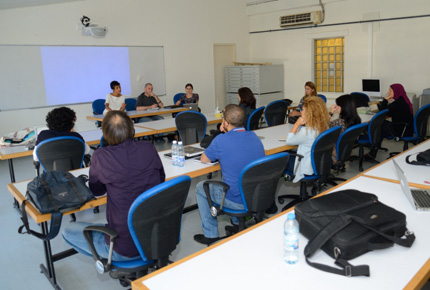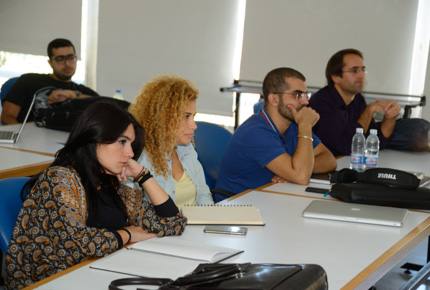Data Journalism workshop at LAU trains faculty and students for the future
Workshop introduces the LAU community to data journalism in preparation for the launch of the new B.A. in Digital Journalism and Social Communication.

Workshop introduces the LAU community to data journalism in preparation for the launch of the new B.A. in Digital Journalism.

Journalist has now become teamwork where a ‘traditional’ journalist collaborates with an information designer and a programmer to visualize data.
How can we find stories in an Excel sheet full of numbers? What kind of questions do we need to ask about this excel sheet to give us meaningful answers that are worth reporting about? The Data Journalism workshop held last week at LAU helped students and faculty to answer these and other questions, as the university prepares for the launch of the new B.A. in Digital Journalism and Social Communication.
“What data journalism does is no longer go out onto the street to speak to people,” explains Visiting Assistant Professor of Journalism Monika Halkort. “It takes big data sets, like health or water statistics, and it asks journalistic questions about these data sets. A simple example would be how the pollution of Beirut’s coastline has changed over the last four years, examining different factors. And rather than just write the story as we once would have, we now also visualize it with together with a designer to create powerful information graphics, which is what we did over the weekend here at LAU.”
Nino Macharashvili and Eric Barett of Jumpstart Georgia — a data journalism group with a proven track record in data journalism in Tbilisi, Georgia — came to Beirut to lead the workshop’s training sessions. Among other topics, participants learned how to understand the legal framework in which journalists access and use data, how to use statistics to understand data, the concepts of data visualization, the importance of having a team and how to use online platforms such as StoryBuilder to share their multimedia stories with the world.
Eric Barrett, who has directed Jumpstart Georgia since 2011, was impressed with the diverse representation in the workshop. “It was really interesting to see how even from within LAU all these diverse people came together,” says Barett, commenting on the fact that the event brought together journalism, design and social science students. “This type of work is very multidisciplinary — you work with data, you work with communications, media, design and IT as well. I think it made everyone aware of the benefits that that cross-departmental collaboration can bring.”
According to Halkort, journalism is no longer about just writing or reporting. “It’s effectively teamwork where what you would consider to be a traditional journalist collaborates with an information designer and a programmer to make data come alive.”
The professor explains that the department has reorganized the courses it offers in order to prepare students for the different place in which journalists now find themselves in. “A lot is geared towards digital journalism, data journalism, learning how to work with these tools and take media to the new level where it is happening today,” she says. “We wanted to train our faculty to teach our students and equip them with the skills to compete in the media market today, and we also decided to open it up to the students themselves.”
The workshop, hosted by the Department of Communication Arts, was open to faculty and students of the Design, Social, Political and Computer Science as well as Psychology departments, and marks the first step in a series of specialized training initiatives in essential digital research and media production skills.
More
Latest Stories
- Into the Psychology of Justice
- Alumnus Zak Kassas on Navigation, Spoofing and the Future of GPS
- Hearing Between the Lines
- LAU Hematology Conference 2025: Advancing Science Through Interdisciplinary Exchange
- Dr. Chaouki T. Abdallah Invested as LAU’s 10th President
- LAU Guides Its Students Through the Code of Conduct
- Innovative Procedure at LAU Medical Center–Rizk Hospital Signals Hope for a Patient With a Congenital Disease
- LAU’s Inaugural PodChat Session Addresses AI Detection in the Classroom

